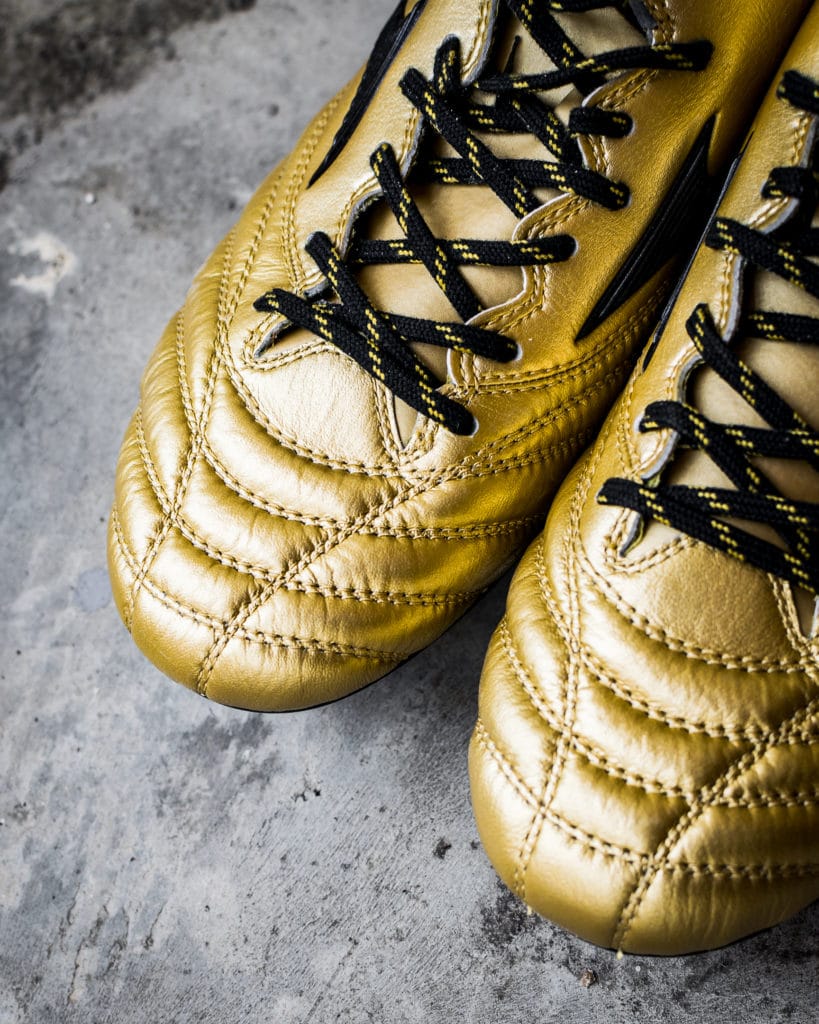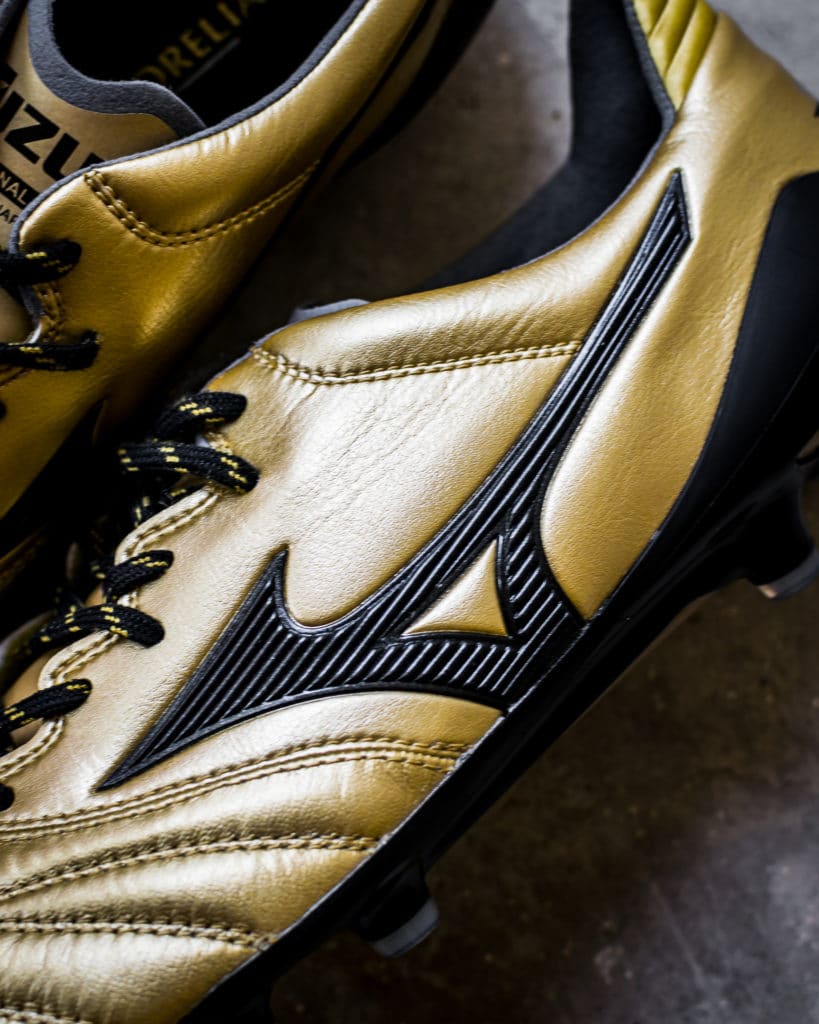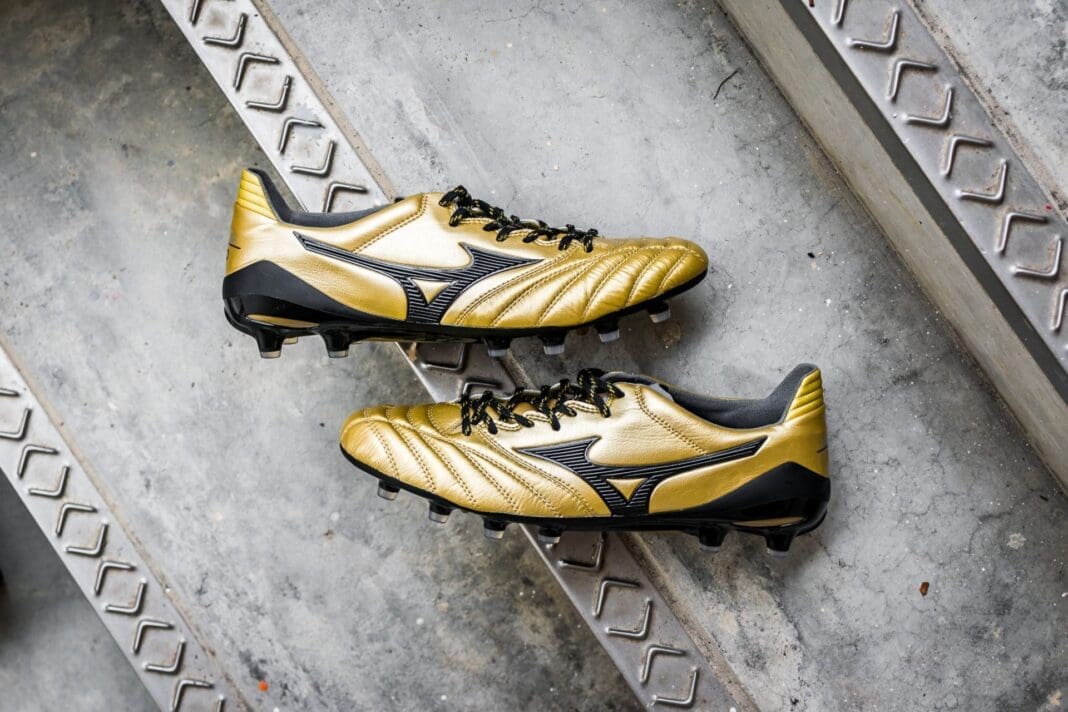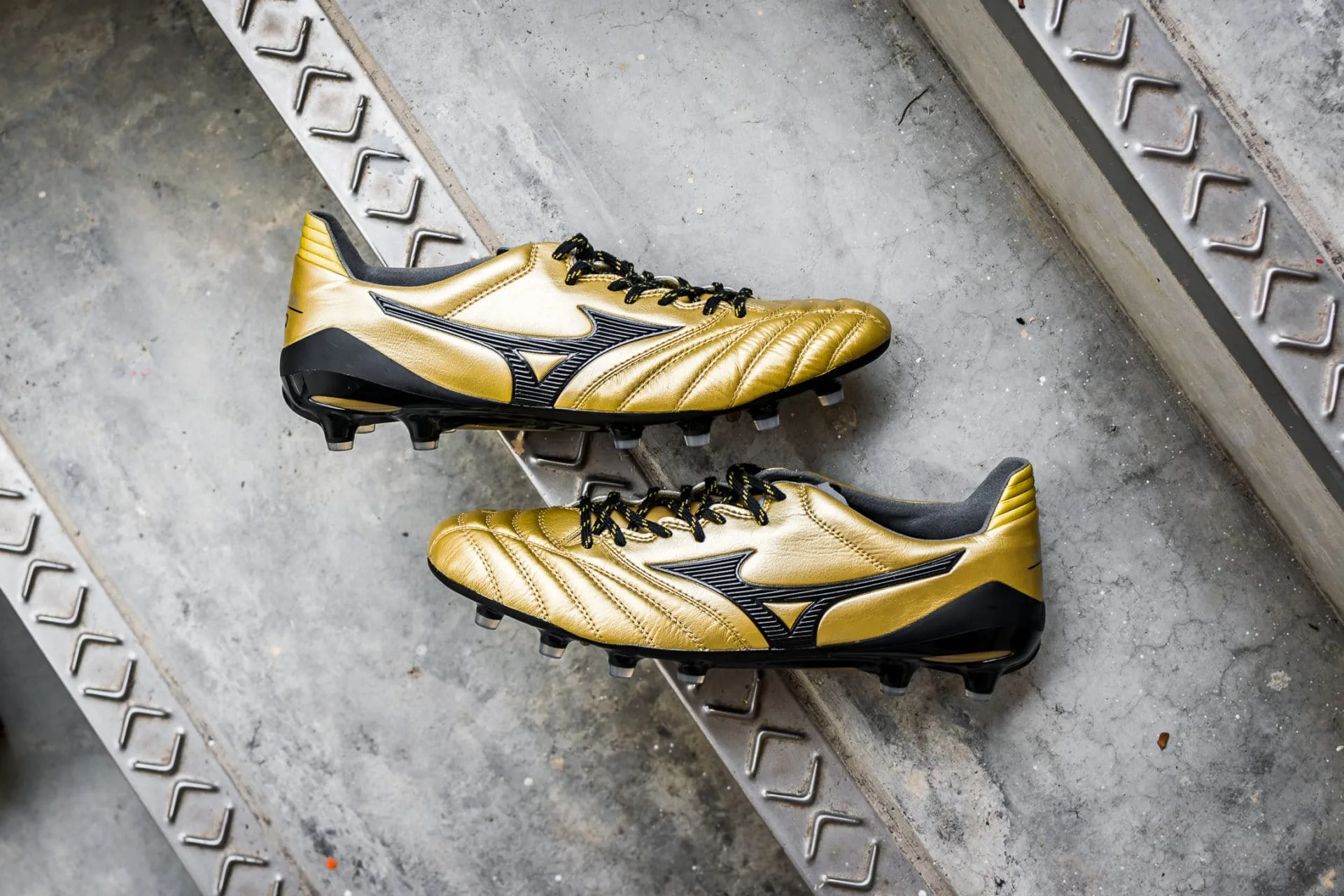Leather on a speed boot in 2018? Mizuno is here to prove critics wrong.
As a Manchester United fan, one of the most annoying things to me was how United’s European dominance coincided with the rise of Pep Guardiola’s Barcelona team.
Before his appointment, football teams typically had a strong focus on power and strength. Pep’s success with his Barcelona team fundamentally changed football. Gone was the focus on physical attributes. Speed of passing, movement and thought were the new norm as we said goodbye to brute force.
In 2010, the football boot industry also faced disruption in favour of speed as adidas launched their F50 Adizero series – ushering in an era of super lightweight boots. While Mizuno were producing boots that were lighter than their contemporaries, a sub 190g boot like the Adizeros had never been done. All that changed in 2011 when the Japanese boot makers launched the 180g Mizuno Morelia Neo Made In Japan.
Wait, doesn’t Mizuno already have a Morelia boot?
The Morelia Neo line is Mizuno’s modern interpretation of its classic boot, Morelia, but in the form of a speed boot. While it retained a kangaroo leather upper in the forefoot, the midfoot is now made of a synthetic leather. An external heel counter and suede heel liner adorns the rear of the boot in place of an internal heel counter. While the studs remained conical in shape, Mizuno made them narrower for better penetration and grip – all being attached to a lighter, modernized soleplate.


The Mizuno Morelia 2 

The Mizuno Morelia NEO 2
Like all of Mizuno’s “Made In Japan” (MiJ) boots, this edition of the Morelia Neo 2 is handcrafted by the finest Japanese Mizuno artisans who personally build each boot by hand. They last each boot (the process of inserting a foot mould into the boot) for 24 hours to give their boots the perfect shape, structure and fit – as opposed to other brands who only last boots for 20 minutes.
Evolution, not revolution
Mizuno wanted to ensure a seamless experience when you have the boot on feet. A big part of this was to reduce any bunching up of the leather when the foot flexes – something that produces hotspots across the feet.
To achieve this, the Japanese boot maker implemented a V-shaped cut at the base of the lacing area to accommodate any movement of the leather upper when flexing – ensuring that the upper remains smooth in motion.


The Mizuno Morelia Neo 2 also had its tongue updated from a mixed mesh and synthetic material to a pure artificial leather piece. While the thin tongue took some getting used to, it fits into Mizuno’s mantra of a barefoot feel while keeping the tongue in position.
Finally, the heel counter also experienced a minor update after feedback about its rigidity. Called the ‘Dynamic Fit Counter’, the upper part of the heel counter is now softer, for a more comfortable fit compared to the first generation of the Morelia Neo. However, the lower section is made harder, to maintain lockdown in the heel area.


Like the Mizuno Morelia 2 Made In Japan, the Morelia Neo 2 also uses Mizuno’s premium scotchguard, washable kangaroo leather. This reduces the amount of water it absorbs when playing in wet conditions. As is the norm for Mizuno boots, the leather is extremely soft and premium. Its padding is minimal, giving you a very natural, barefoot sensation on the ball.
The Wave-Fit lacing system also makes a return, positioning the lace holes in a zig zag formation which allows you to really customize the fit. The deep lacing system locks your feet in tight when you pull on your laces. Do expect to loosen the lace from top to bottom for your first few wears as you break in to the lacing system.
Down the rear of the boot, the grippy synthetic suede heel liner combines with the padded heel area and the Dynamic Fit Counter to give you the best heel lockdown in the business without any discomfort or hot spots. Having said that, the extension piece on the heel will cause some chafing if it contacts bare skin, so avoid wearing ankle socks.
If it ain’t broke, don’t fix the soleplate
The Morelia Neo had some early problems with stud durability on artificial grass surfaces. This led to Mizuno to not only update the stud construction, but they went to the extent of offering exchanges in Japan due to these issues. For the Morelia Neo 2, they reinforced the studs and also used a Pebax material to increase durability for AG surfaces as well.
Like most modern day soleplates, it is flexible in the forefoot and rigid in the midfoot to allow for a natural smooth ride. A conical 9×4 stud pattern means you get nice maneuverability but sacrifice the aggressive bite that some love from the Nike Mercurial series. The studs are reminiscent of the ones on adidas boots such as the adidas Ace and adidas Copa line. They’re long enough to feel aggressive and give you pretty good traction on both FG and AG surfaces, without feeling any stud pressure.


In what is a recurring theme for Mizuno boots, the insole has the best grip in the business but also the worst cushioning. However, I do feel that this is forgivable in a speed boot. Mizuno’s laces also deserve a shout out. While not the best looking, the cotton-like laces rarely loses its tension and knots, which means less chances of your lacing coming undone mid-game.
A break from the norm
To borrow a popular pro-wrestling term, the Morelia Neo 2 performs a heel turn when it comes to comfort because it is the first Mizuno boot I’ve owned that requires a break-in time.
Yes, you read that right, there was break-in time required.
It speaks of Mizuno’s consistent quality that we expect the boots to be match-ready out of the box.
The reason why the Morelia Neo 2 is a little stiffer than expected is because the boot fits extremely true to size and is super snug straight out of the box, with the midfoot being especially tight . If you have an extremely wide or flat foot, you might want to buy a different boot instead. Length-wise I had little to zero excess space in the toe area, although the width did stretch to the shape of my foot after a few hours in them.


Once the boot breaks in, it is the epitome of Mizuno’s commitment to its 4 criterias – natural barefoot touch, fit, weight and premium Kangaroo leather. Many times during a game, I’d forget that I was actually wearing boots. What makes it superior to the Morelia 2 (and the Wave Cup Legend) is the combined lockdown and responsiveness from the Wave-Fit lacing system, synthetic mid-foot, Dynamic Fit Counter and heel construction. Twisting and pivoting always felt stable and secure, something which was lacking in the Morelia 2.
The golden touch
Touch-wise, the leather is thin enough that you get a barefoot feel on the ball and my word, it feels great. Flicks, no-look passes and little touches on the ball all come naturally as the boot gives you confidence to do whatever you want with the ball – very similar to how the adidas X18.1 feels.
Because of how thin the synthetic upper and tongue is, you will feel the sting of every shot that you take – a true bone to ball connection. It may be weird to some readers but I do enjoy shooting and knuckling the ball at its sweet spot as I could really feel the ball connect with the bony area of my foot.


As you’d expect from a Made in Japan boot, the Morelia Neo 2’s quality and durability are top notch. Having said that, the leather on the Morelia Neo 2 is pretty thin.vIt might not last as long as your Morelia 2, but it should last you at least 2 seasons if you play regularly. The soleplate is also riveted on several areas, so the risk of sole separation is heavily reduced.
Mizuno Morelia Neo 2 – not fashionable but always reliable
‘Yea, I heard it’s good and comfortable, but I want to wear something which Neymar/Mbappe/Pogba/Ozil wears too’
The Morelia Neo 2’s biggest problem, is its lack of branding. Everyone who’s taken my advice to try the Morelia Neo 2 has never looked back, but younger players have constantly stayed away from it because of its looks and Mizuno’s obscurity.


In my previous Morelia 2 review, I concluded that it was a boot out of time, caught in an era where its flaws were exposed, like Cesc Fabregas in a 2-man midfield. The Morelia Neo 2 though, is definitely a boot for the modern era, combining lightweight, responsiveness and comfort into a single package. If you’re serious about your football, you owe it to yourself to look past the marketing and try on a pair.




